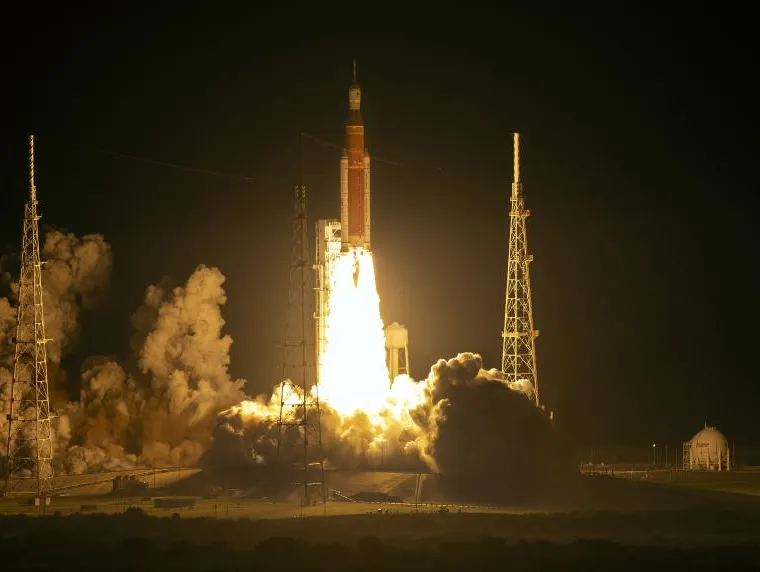NASA’s SLS rocket is over budget by $6 billion and six years behind the schedule
NASA’s Space Launch System (SLS) rocket, designed to carry astronauts to the moon, is over budget and well behind schedule, according to a grim new assessment by NASA’s inspector general. In addition, the report predicts “additional costs and schedule increases” that could jeopardize the entire Artemis mission if the problems are not addressed.
NASA spending on the Artemis Moon program is projected to reach $93 billion by 2025, including $23.8 billion already spent on the SLS system by 2022. That means “a $6 billion cost increase and more than six years of costs.” Schedule delays are greater than NASA’s original expectations,” the report states.
Launching for the first time in November 2022, SLS will use four RS-25 engines per launch, 16 of which have been salvaged from retired space shuttles. When these engines run out (all SLS engines are consumables), NASA will switch to RS-25E engines made by Aerojet Rocketdyne, which are supposed to be 30 percent cheaper and 11 percent more efficient. Fixed rocket boosters supplied by Northrop Grumman are also used.
However, the old technology does not help the budget as much as NASA expected. “These increases stem from interrelated issues, such as assumptions that using legacy technologies from the Space Shuttle and Constellation programs is expected to result in significant cost and schedule savings compared to developing new systems for SLS,” the review states. “However, the complexity of developing, upgrading and integrating new systems and old components has proven to be much greater than expected.”
For example, only 5 of the 16 engine changes have been completed, and the increase in range and cost has also hit the booster contract. The latter has been the biggest problem, rising from $2.5 billion to $4.4 billion after the Artemis announcement and a five-year schedule delay.
The inspector general also blames the use of “cost plus” contracts, which allow suppliers to more easily increase budgets instead of fixed-price contracts. The report recommends moving future business to a fixed-price system and, among other things, solving procurement problems. NASA management accepted all eight recommendations.
The Artemis mission to the Moon was built on the Constellation program, originally launched in 2005, with the goal of returning to the Moon by 2020 and eventually to Mars. The Obama administration’s cancellation of this project drew widespread criticism, largely because the program protected jobs across the United States.
However, NASA’s 2010 Authorization Act of 2010, that same year, mandated construction of the SLS and required existing technology, contracts, and manpower to be re-leased from Constellation. It also required partnerships with private space companies. For example, SpaceX is developing its own Starship rocket system, which can also transport astronauts to the Moon and Mars. However, the starship blew up on its first orbital launch mission, and may not fly again soon due to problems with the self-destruct command and the significant damage it caused to local ecosystems.




